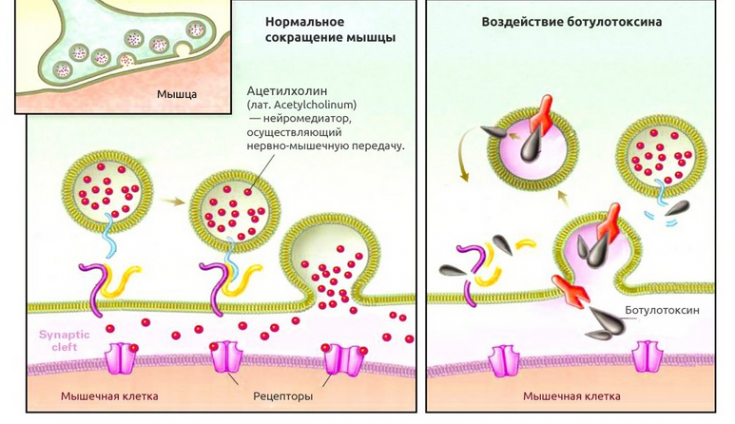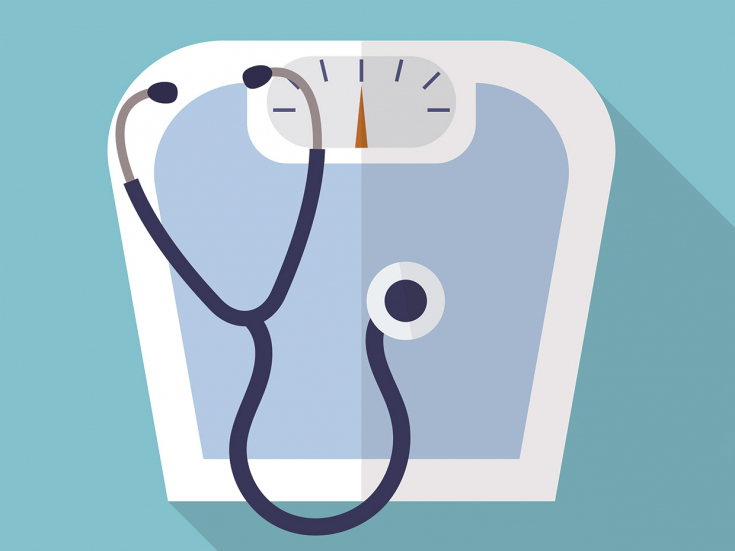The use of botulinum toxin has long been firmly established in aesthetic medicine. The number of patients receiving regular injections of toxin to eliminate wrinkles is steadily increasing as people learn how simple, fast, relatively painless and effective the treatment can be.
Over the years, a large number of clinical trials have been conducted regarding various applications of botulinum toxin. This allowed us to collect a fairly large amount of information about the use of botulinum toxin in different areas of the body, and not just on the face.
Read on estet-portal.com how obesity can also be treated with botulinum toxin.
Botulinum toxin for the treatment of obesity: current possibilities of the toxin
Research that is of interest to both clinicians and patients concerns the use of botulinum toxin for weight loss in obese patients.
In 2014, a British national newspaper reported on work being done at St. Olav's Hospital in Trondheim, Norway, showing that botulinum toxin can have a positive effect on obesity.
The article reported that endoscope-guided injections of the toxin into the stomach wall slowed down the passage of food through the stomach, making patients feel full longer. Earlier this year, the same Norwegian team presented additional data, now with information about repeat treatments with botulinum toxin. About 70% of 20 patients reportedly lost 17% of their weight after one year.
History of the use of botulinum toxin for weight loss
Obesity is a major public health problem in many countries. The possibility that botulinum toxin treatment could benefit obese patients was first proposed in 1995 by Italian researchers in Rome.
CO2 therapy for the treatment of obesity and skin irregularities
Their first publication described a very small study in rats that found that 20 units of botulinum toxin distributed over six sites in the distal stomach produced weight loss for a period of about one month.

However, there are several problems with these studies:
• not all animals responded to therapy;
• It is not possible to calculate the human dose based on animal studies because some species are more or less sensitive to the toxin;
• research was carried out in a short time, so it is impossible to talk about the long-term effect.
Therefore, a sufficiently large number of clinical trials are still needed for the use of the toxin in the treatment of obesity in humans.
What is the mechanism of the toxin's effect on the stomach
There are several possible actions of botulinum toxin that could explain the slimming effect if the drug is administered intragastrically. First, by reducing the muscle activity of the stomach, the rate of gastric emptying slows down, which makes patients feel full for longer.
For the smooth muscles of the stomach, as well as the bladder, the targets of botulinum toxin are visceral (autonomous) efferent neurons, in contrast to somatic efferent motor neurons, which are found in skeletal muscles.
There is also evidence of a direct lipolytic effect of the toxin, which occurs as a result of the suppression of the innervation of adipose tissue by the toxin.

Botulinum toxin also affects the activity of the vagus nerve. This nerve controls the unconscious activities of the body, such as regulating the heart rate and digesting food. Therefore, exposure of the vagus nerve to the toxin could potentially reduce food intake.
You may also be interested in: Bariatric Surgery — effective method of surgical treatment of obesity







Add a comment